The Second Conference of Transdisciplinary Federation of Science and Technology
Displaying 1-50 of 137 articles from this issue
I-11 Innovation and Management
-
Session ID: 29A01
Published: 2007
Released on J-STAGE: November 27, 2008
Download PDF (243K) -
Session ID: 29A02
Published: 2007
Released on J-STAGE: November 27, 2008
Download PDF (227K) -
Session ID: 29A03
Published: 2007
Released on J-STAGE: November 27, 2008
Download PDF (189K) -
Session ID: 29A04
Published: 2007
Released on J-STAGE: November 27, 2008
Download PDF (189K) -
Session ID: 29A05
Published: 2007
Released on J-STAGE: November 27, 2008
I-12 Frontier of Human Interface
-
Session ID: 29A08
Published: 2007
Released on J-STAGE: November 27, 2008
Download PDF (305K) -
Session ID: 29A09
Published: 2007
Released on J-STAGE: November 27, 2008
Download PDF (260K) -
Session ID: 29A10
Published: 2007
Released on J-STAGE: November 27, 2008
Download PDF (239K)
II-11 Professional Development of Trans-disciplinary Science and Technology
-
A Standpoint of Synthesis Education and Project-Based Design Learning Class with Industrial PartnersSession ID: 29B01
Published: 2007
Released on J-STAGE: November 27, 2008
Download PDF (46K) -
Session ID: 29B02
Published: 2007
Released on J-STAGE: November 27, 2008
Download PDF (241K) -
Session ID: 29B03
Published: 2007
Released on J-STAGE: November 27, 2008
Download PDF (78K) -
Session ID: 29B04
Published: 2007
Released on J-STAGE: November 27, 2008
Download PDF (245K) -
Session ID: 29B05
Published: 2007
Released on J-STAGE: November 27, 2008
Download PDF (334K) -
Session ID: 29B06
Published: 2007
Released on J-STAGE: November 27, 2008
-
Session ID: 29B07
Published: 2007
Released on J-STAGE: November 27, 2008
Download PDF (170K) -
Session ID: 29B08
Published: 2007
Released on J-STAGE: November 27, 2008
Download PDF (530K) -
Session ID: 29B09
Published: 2007
Released on J-STAGE: November 27, 2008
Download PDF (162K) -
Session ID: 29B10
Published: 2007
Released on J-STAGE: November 27, 2008
Download PDF (304K) -
Session ID: 29B11
Published: 2007
Released on J-STAGE: November 27, 2008
Download PDF (318K) -
Session ID: 29B12
Published: 2007
Released on J-STAGE: November 27, 2008
Download PDF (34K)
II-12 Social Responsibilities for Professionals of Trans-disciplinary Science and Technology
-
Session ID: 29B13
Published: 2007
Released on J-STAGE: November 27, 2008
Download PDF (163K) -
Session ID: 29B14
Published: 2007
Released on J-STAGE: November 27, 2008
Download PDF (27K)
III-11 Informational Interface for Drugs
-
Session ID: 29C01
Published: 2007
Released on J-STAGE: November 27, 2008
-
Session ID: 29C02
Published: 2007
Released on J-STAGE: November 27, 2008
Download PDF (42K) -
Session ID: 29C03
Published: 2007
Released on J-STAGE: November 27, 2008
Download PDF (189K) -
Session ID: 29C04
Published: 2007
Released on J-STAGE: November 27, 2008
Download PDF (275K)
III-12 Realization of Safety and Security
-
Session ID: 29C05
Published: 2007
Released on J-STAGE: November 27, 2008
Download PDF (137K) -
Game Theory Application Reduced Adverse Events in Perioperative Anesthetic Models – Simulation StudySession ID: 29C06
Published: 2007
Released on J-STAGE: November 27, 2008
Download PDF (477K) -
Session ID: 29C07
Published: 2007
Released on J-STAGE: November 27, 2008
Download PDF (78K) -
Session ID: 29C08
Published: 2007
Released on J-STAGE: November 27, 2008
Download PDF (190K)
III-13 Beyond the JIT
-
Session ID: 29C09
Published: 2007
Released on J-STAGE: November 27, 2008
Download PDF (333K) -
Session ID: 29C10
Published: 2007
Released on J-STAGE: November 27, 2008
Download PDF (156K) -
Session ID: 29C11
Published: 2007
Released on J-STAGE: November 27, 2008
Download PDF (93K) -
Session ID: 29C12
Published: 2007
Released on J-STAGE: November 27, 2008
Download PDF (149K) -
Session ID: 29C13
Published: 2007
Released on J-STAGE: November 27, 2008
Download PDF (300K)
IV-11 SICE city, Organized Session by SICE
-
Session ID: 29D01
Published: 2007
Released on J-STAGE: November 27, 2008
Download PDF (614K) -
Session ID: 29D02
Published: 2007
Released on J-STAGE: November 27, 2008
Download PDF (241K) -
Session ID: 29D03
Published: 2007
Released on J-STAGE: November 27, 2008
Download PDF (465K) -
Session ID: 29D04
Published: 2007
Released on J-STAGE: November 27, 2008
Download PDF (184K) -
Session ID: 29D05
Published: 2007
Released on J-STAGE: November 27, 2008
Download PDF (876K)
IV-12 Regular Session (1) : Representative research in Human Interface
-
Session ID: 29D06
Published: 2007
Released on J-STAGE: November 27, 2008
Download PDF (951K)
IV-13 Fusion of Various Modal Knowledge
-
Session ID: 29D07
Published: 2007
Released on J-STAGE: November 27, 2008
Download PDF (672K) -
Session ID: 29D08
Published: 2007
Released on J-STAGE: November 27, 2008
Download PDF (154K) -
Session ID: 29D09
Published: 2007
Released on J-STAGE: November 27, 2008
Download PDF (531K) -
Session ID: 29D10
Published: 2007
Released on J-STAGE: November 27, 2008
Download PDF (349K) -
Session ID: 29D11
Published: 2007
Released on J-STAGE: November 27, 2008
Download PDF (113K) -
Session ID: 29D12
Published: 2007
Released on J-STAGE: November 27, 2008
Download PDF (252K) -
Session ID: 29D13
Published: 2007
Released on J-STAGE: November 27, 2008
Download PDF (674K)
V-11 Methodology on Cognitive Science, Information Science, Statistical Science and Knowledge Management (1)
-
Session ID: 29E01
Published: 2007
Released on J-STAGE: November 27, 2008
Download PDF (47K) -
Session ID: 29E02
Published: 2007
Released on J-STAGE: November 27, 2008
Download PDF (313K)
